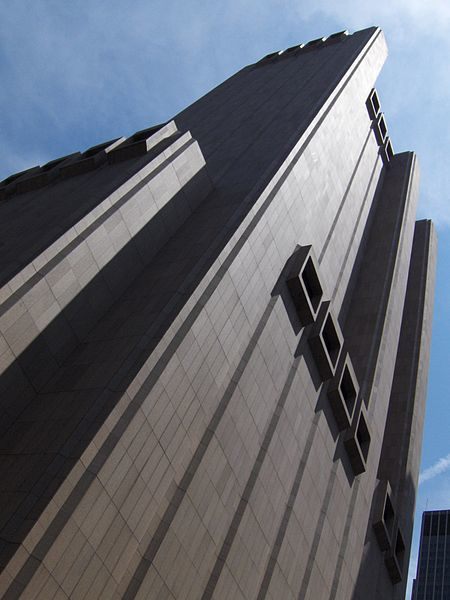Monuments of architecture and creators of the transcendence - Doomsday Structures (Part 2)
When we think of Doomsday or that the end of the world is nigh, the idea and rhetoric is usually conjoined to the person in the street warning of pending doom about to strike or the prepper, whose fears have been magnified by a disposition of psychology – that an attack of some sort is imminent. In preparation for a future at the expense of the now, becomes an unhealthful obsession. But, what if government or a corporate entity with vastly more resources and capital, that has been at times throughout the 20th and 21st century, have been preparing for a doomsday event. There is such a building, that was designed and constructed with an idealism to withstand a destructive event, which in its period in time, could have been a certainty. The building is 33 Thomas Street Manhattan, a 550 foot tall windowless monolithic skyscraper. A stunning example of brutalist architecture in its pure form, that portrays a stark reminder of 20th century cold war fears, that was once publicized as a current event, now within our digital and globally connected world - in its veiled illusion, has made it less so. Yet, the threat of a newer cold war remains, not of a past spectra, but a constant reality.
Designed by the late John Carl Warnecke and completed in 1974, at a time when the cold war still festered a possibility of World War Three, America had just withdrawn the last of its troops from Vietnam in 1973, as the 1950s modernist dream was all but over. Inflation and the Middle Eastern oil crisis ensured that discord and political upheaval continued throughout the era, all the while the tensions between Russia and America ensured that the intercontinental and ballistic thermonuclear missile attacks were still a persistent reminder of mutual assured destruction. So, when we see a structure that was built for a Doomsday, from a globally divided era, there is a reasoning in its purpose, a representation of an inanimate duty. This structure was not created to house its citizens or protect the inhabitants of the building, rather 33 Thomas Street, a telephone exchange was created in its sole manifestation to protect the machinery, the communications of a city, that from within this concrete structure, in its temple like radiance. Vehement in design, its idealism is only to house the machines, more importantly the titled: No. 4 Electronic Switching Systems or 4ESS for short. Electronic switches, introduced in 1976, they were the first digital long toll-switching system, owned by the communication company AT&T.
It is when you step back and look at the building and how its sits within the surrounding Manhattan skyline, while it displays an ominous sentiment, at the same time a familiar one. It blends in with the surrounding buildings despite its mechanical concept, but, once it begins to looms closer, the fixation of its design becomes apparent. This building stands alone. And that's an important visual descermant, as its construction, both eternally and internally is vastly different to the buildings that reside around this structure. Warnecke specially designed the building to be a massive fortress, the average ceiling height that houses the electronic switches and computer equipment is over 18 feet in height, but it is the floors that hold the equipment is indication of its structural integrity, built like no other skyscraper in the world, at 200 to 300 pounds per square foot. It holds secularly the weight of the machinery within this building, in comparison of the twin towers on September 11th 2001 – when its floors collapsed into a cascading effect which crushed the building inward due to the extreme heat of the burning aviation fuel. 33 Thomas Street was built not just to take the impact of an conventional explosive matter, but the devastating power of a nuclear attack. Warnecke who had an interest in telecommunication and technological throughout his career as an architect, with family connections to the larger communication companies in America at the time, this was his doomsday project, to which he titled the plans as “Project X”, a self contained mini city, with gas, water, food that could house up to 1500 people if necessary – there was emergency power generators as the building extends down three sub basement levels.
What is fascinating within the building's dynamic is its reverance to the mechanical, the structure. For it to survive, not as an continued automation of machinery, but as a testament of an human imprint. A concept, even with a Doomsday ethos, to out live the biological. It is said by former technicians who worked at 33 Thomas St that at night, the lights would turn off internally, yet there was only the persistent hum of the electronics. As though it was alive.






Comments
Post a Comment